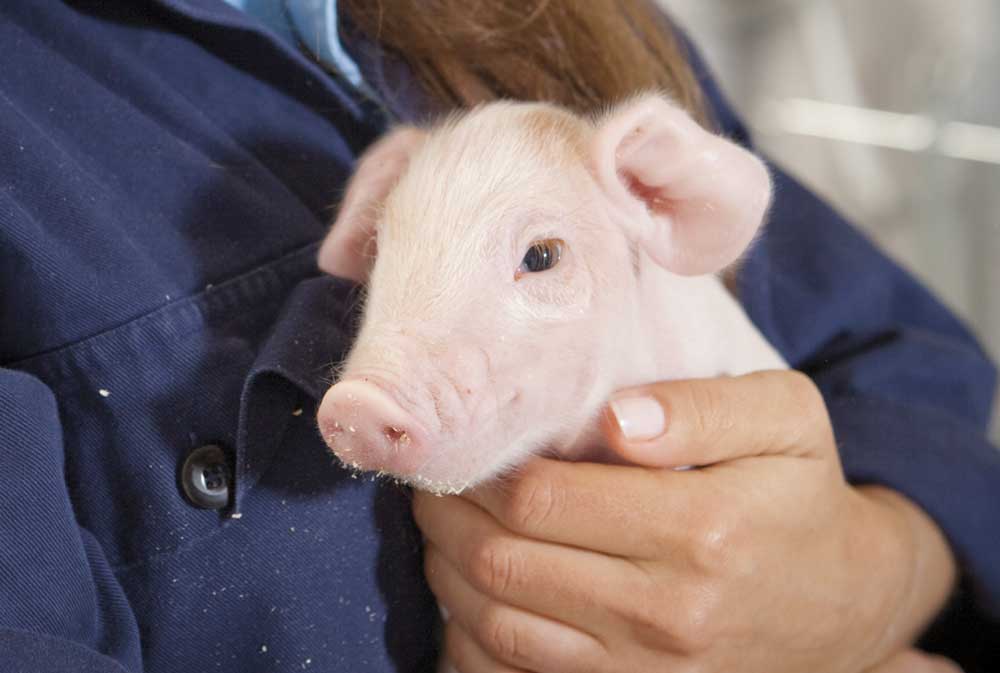Researchers from China demonstrated the application of herd closure and the rollover approach without deliberate live virus exposure in a farrow-to-finishing herd after a severe PRRS outbreak. Herd closure and rollover is a popular PRRSV elimination strategy with acceptable costs.
The herd closure and rollover strategy consists of 3 steps:
- PRRS-negative gilts are introduced in 1 batch. The number of PRRSV-negative gilts should be enough for the sow replacement during herd closure to minimise the costs.
- The next step is herd closure, which usually takes 210-250 days until the herd reaches a provisional negative status.
- In the last step, all pigs are exposed to the PRRS live virus at the same time. In this method, the sow population is infected at the same time via simultaneous vaccination of the PRRSV-modified live vaccine or inoculation with serum containing resident virus and recovers simultaneously, thus, the entire population will establish sterilizing immunity against field strains.
Data collection
The farrow-to-finish facility contained 1.252 sows and 630 gilts, with corresponding nursery houses, fattening houses, and a gilt development unit. A severe PRRS outbreak occured in the herd. The research team collected 5 blood samples from sows and 5 tissue samples from stillbirth fetuses within 3 days post-outbreak for qPCR and ELISA tests. Later, they designed a PRRS elimination programme, in which the deliberate exposure of the live virus was skipped. No gilt was introduced until after the PRRS outbreak, and the herd closure began 15 days post- outbreak.
The researchers delayed gilt introduction until the herd reached a provisional negative status. During the herd closure, all semen was purchased from outside suppliers to ensure it is negative for common pathogens via qPCR tests.
The PRRS-positive ratio of the pre-weaning pigs declined quickly and became 100% negative by 23 weeks post-outbreak. Depopulation was launched in the 27th week after the pre-weaning piglets tested negative for PRRS for 4 consecutive weeks.
During the herd closure, the team applied strict internal biosecurity measures to limit PRRS transmission within the farm. The nursery and fattening houses reopened again to accept the PRRS-negative weaned piglets from the farrowing houses.
Meanwhile, the team introduced 90 PRRS-naïve gilts into gestation barns, neighbouring sows as sentinel pigs. When no sentinel pig showed positive tests for at least 60 days after introduction, the herd would reach a provisional negative status.
The impact of the PRRS outbreak
During the outbreak, the sows exhibited severe reproductive failures. These included decreased mating rates after weaning (54.78%), a reduced farrowing rate post-outbreak (59.05%), an increased abortion rate (43.5%) and a stillbirth rate per litter of 7.76%. In addition to this, the piglets born alive per litter, the weaned piglets per litter, and the weaning weight of piglets decreased. Furthermore, the mortality rate of the suckling piglets and nursery piglets increased post-outbreak.
Achieving a provisional negative PRRS status
The nursery pigs maintained PRRS negativity for 9 weeks after reopening. This indicated that the herd achieved the standard of a provisional negative status after 37 weeks. 1 week after the herd reached a provisional negative status, 33.3% of samples of sows and gilts showed a PRRS-antibody-positive result, while only 4% of pre-weaning piglets were PRRS antibody positive.This indicated that the herd was close to producing PRRS-negative offspring.
In the 50th week post-outbreak, the pre-weaning pigs started to show 100% antibody negativity, while the sow population was antibody negative in the 62nd week post-outbreak. Moreover, the herd returned to the pre-outbreak production levels after 5 months. The overall median time to baseline production depends on various factors, including the sows’ health level, the PRRS field strains virulence, the sow population age, and the presence of secondary infections.
Conclusions
The authors concluded that deliberate exposure is not always necessary when PRRS has just broken out in a herd. In addition, depopulation of nursery houses can be delayed in farrow-to-finish facilities, which significantly reduces elimination costs.

